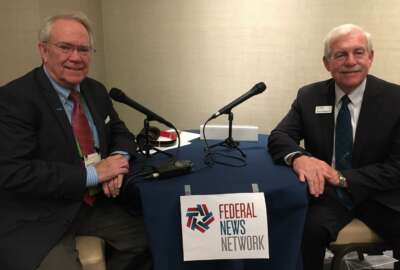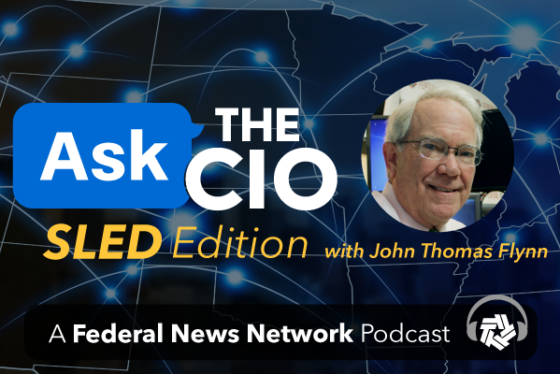
Part 1: Local governments bend but don’t break under coronavirus
Public Technology Institute's Alan Shark described the coronavirus pandemic's impact on local governments operations, challenges and success stories.
Alan Shark is amazed at the difference a few months can make.
Before the coronavirus turned the world upside down, in January his organization, the Public Technology Institute (PTI) and the National Association of State CIOs (NASCIO) coordinated on a webinar on the 2020 technology forecast for state and local officials.
Given what has transpired over the ensuing months, those prognostications are being reconstituted due to the virus’ impact on state and local government IT priorities and spending.
Shark, the long-time PTI executive director, gave a fairly positive forecast in January for the growth rate of expenditures, as well as for hiring in cybersecurity, artificial intelligence, cloud, training and workforce development.
“It was one of the more happy pictures that I’ve witnessed in my nearly 16 years at the helm at PTI,” he said. “I agree now, however, what we’re hearing and we’re in daily touch with CIOs from cities and counties across the country, it’s a different picture.”
PTI describes local government impact and resilience
PTI, based in Washington, D.C., is the premier technology organization created by and for cities and counties, actively supporting local government executives and elected officials through research, education, executive-level consulting services. It also hosts national recognition programs.
I asked Shark the degree of disruption from the pandemic that his local government IT leaders were experiencing on a one to 10 basis. “If 10 is the end of the scale being the most disruptive, they’re at a 12,” according to Shark. However, there is some good news that Shark is hearing as well. He speaks with these people every hour of the day. They are putting in incredible hours. The good news is that they’re being recognized by their leadership as never before. They’re being brought in by their program and elected officials to sit at the table. They are now a critical part of planning, not just an afterthought. A very similar situation we’re seeing at hthe state level as well. “They are now, I think city leaders, public managers are realizing the important role that these people play and how they had to switch from a work-based organization with physical locations to a virtual environment, including trying to figure out how do we bring the public into this picture through digital services, through meetings in ways that they never ever had to do before,” Shark said.
This switch for local government employees from the central office campus to a remote/telework environment during this pandemic has all come down to how effectively their organizations have been able to deploy disaster recovery (DR) and continuity of operations plans (COOP). That is, if they have them at all, an issue that has been challenging especially for state and local governments for years.
Shark admitted that some local government PTI members have experienced deficiencies in the DR/COOP areas. “Nobody from all the plans and I’ve been teaching this for years, I don’t think anybody contemplated being away from a physical structure as long as we have,” Shark said. The time factor is what’s really critical here. Most plans seven or eight years ago only contemplated a ‘three day away’ kind of status. They could still resume operations, but these things that they envisioned would never take more than a few days. But now it’s more like two months and counting. That is a totally different paradigm, and local governments have had to adopt new strategies to function under these circumstances.
Marriage licenses issued online
According to Shark, even the smallest local government organization delivers approximately 200 lines of business.
“I think one of the more lighthearted things is how quickly local governments have had to adapt into figuring out ways to allow people to get married online,” he said. “Who would have thought? Now they haven’t figured out divorce, John — divorce is another issue. But marriage, yes.”
The challenge, especially for most of the smaller and medium-size localities, has been that they’re not able to keep up with the digitization movement that began several years ago. Those who didn’t invest enough are hurting right now, Shark said.
Similar to state government, locals were challenged by the need to gear up for telework infrastructure: Devices, networks, virtual private network (VPN) licenses, cybersecurity and software. That raised the issue of volume, demand and capacity.
“Suddenly you had people who would not normally be considered as a candidate or likely candidate for telework. I mean, normally you would assign certain people, the heads of public safety, fire and health, but this situation today goes down the line,” Shark said.
Local CIOs facing remote infrastructure challenges
The sheer volume of people suddenly finding themselves on their own, working at home did create some significant communication challenges.
“Many people are in Microsoft shops and they hadn’t really turned on Microsoft Teams just as one example. But the bigger issue is getting into VPNs. But how do you secure the enterprise and what if there’s not enough equipment to go around?” Shark asked. “So we’ve found that collectively, there were not enough laptops to be distributed, laptop inventory is like minus a million.”
And configured laptops are even more scarce. That’s also the case for headsets, for decent cameras, and other equipment. Due to this situation people wanted to use their own equipment at home, raising device management issues.
“Very often these things were never intended to be work in a government situation. So they had to load the right protections,” he said. “All of this in a matter of days or hours and most of this ad hoc — they weren’t prepared.”
IT Vendor community steps up
Next, they realized that employees didn’t have decent broadband at home. They didn’t think they needed it.
“This is where the vendor community, God bless them, they came through in many cases with donated equipment, vendors helping with VPN licenses,” Shark exclaimed. “This has been one of the most interesting, moments of collaboration between the private sector, the vendor community and local government CIOs. It’s been amazing and amazingly positive.”
Next week we’ll continue this conversation with Part 2, and discuss some of the significant best practices and lessons learned for local governments resulting from this crucible of the 100-year pandemic.
Copyright © 2025 Federal News Network. All rights reserved. This website is not intended for users located within the European Economic Area.
Related Stories

NASCIO midyear conference goes virtual; coronavirus victim





